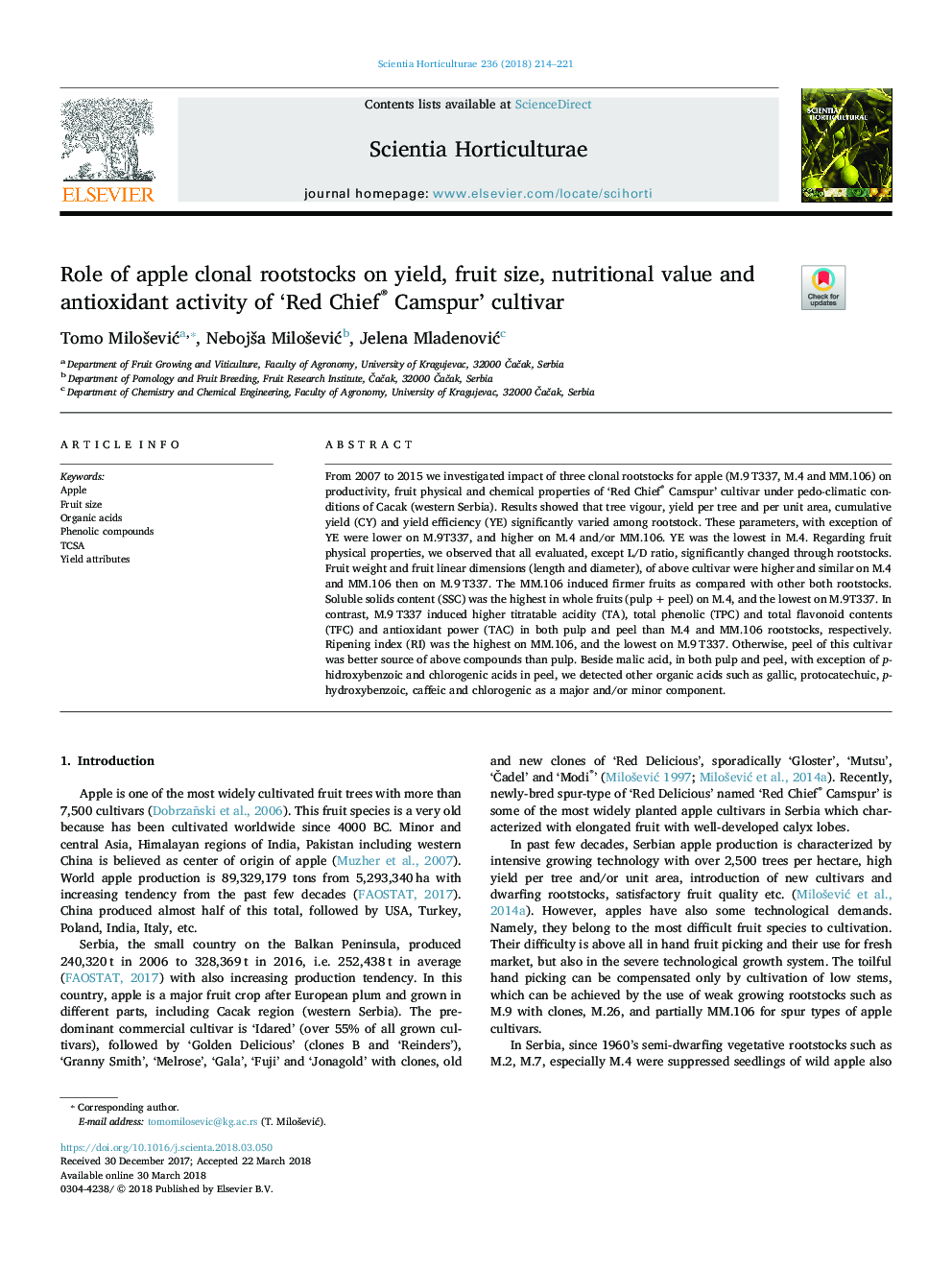| Article ID | Journal | Published Year | Pages | File Type |
|---|---|---|---|---|
| 8892632 | Scientia Horticulturae | 2018 | 8 Pages |
Abstract
From 2007 to 2015 we investigated impact of three clonal rootstocks for apple (M.9â¯T337, M.4 and MM.106) on productivity, fruit physical and chemical properties of 'Red Chief® Camspur' cultivar under pedo-climatic conditions of Cacak (western Serbia). Results showed that tree vigour, yield per tree and per unit area, cumulative yield (CY) and yield efficiency (YE) significantly varied among rootstock. These parameters, with exception of YE were lower on M.9T337, and higher on M.4 and/or MM.106. YE was the lowest in M.4. Regarding fruit physical properties, we observed that all evaluated, except L/D ratio, significantly changed through rootstocks. Fruit weight and fruit linear dimensions (length and diameter), of above cultivar were higher and similar on M.4 and MM.106 then on M.9â¯T337. The MM.106 induced firmer fruits as compared with other both rootstocks. Soluble solids content (SSC) was the highest in whole fruits (pulpâ¯+â¯peel) on M.4, and the lowest on M.9T337. In contrast, M.9â¯T337 induced higher titratable acidity (TA), total phenolic (TPC) and total flavonoid contents (TFC) and antioxidant power (TAC) in both pulp and peel than M.4 and MM.106 rootstocks, respectively. Ripening index (RI) was the highest on MM.106, and the lowest on M.9â¯T337. Otherwise, peel of this cultivar was better source of above compounds than pulp. Beside malic acid, in both pulp and peel, with exception of p-hidroxybenzoic and chlorogenic acids in peel, we detected other organic acids such as gallic, protocatechuic, p-hydroxybenzoic, caffeic and chlorogenic as a major and/or minor component.
Related Topics
Life Sciences
Agricultural and Biological Sciences
Horticulture
Authors
Tomo MiloÅ¡eviÄ, NebojÅ¡a MiloÅ¡eviÄ, Jelena MladenoviÄ,
